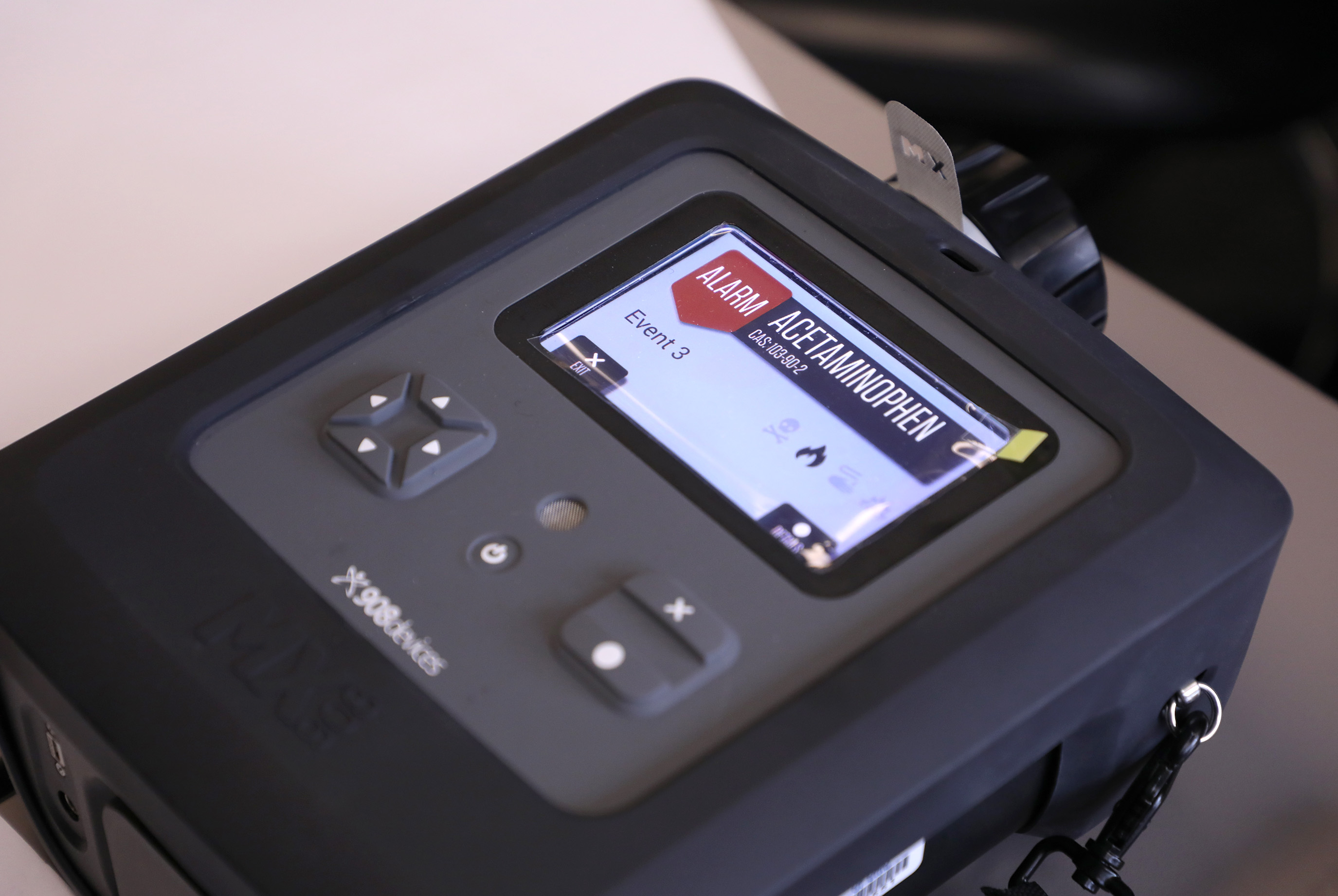
A pilot program that makes it possible for law enforcement officers to test suspected drugs in the field — in a matter of minutes — continues to expand and is moving into its final stages.
Beginning this month, officers from select law enforcement agencies in southeast Ohio will be trained to use a portable mass spectrometer — a cutting-edge device called MX908 — that can analyze suspected drugs virtually immediately. Until recently, such an analysis could be conducted only in a laboratory and typically took weeks.
“The same way breathalyzers helped us crack down on drunken drivers, the 908s will help us combat drug offenders and traffickers,” Attorney General Dave Yost said. “This has the potential to revolutionize how drug testing is done in Ohio.”
Southeast Ohio is the final region in the statewide rollout of the rapid-drug-testing pilot program, which Yost’s office launched in October 2021 in conjunction with the Bureau of Criminal Investigation, an arm of the AG's office. Training in southeast Ohio will begin at a handful of agencies and then be expanded as demand dictates.
Through mid-December, BCI had delivered nine 908 devices to agencies in the state and trained 179 peace officers from 99 law enforcement agencies spanning 53 counties. In January, additional devices will be placed at host locations serving southwest Ohio.
Each device is hosted by a single agency and is intended to be shared with neighboring agencies whose officers have been trained. The goal is to have enough 908s so access to one is never more than an hour’s drive away.
To use the spectrometer, an officer simply collects a sample on a swab and inserts it into the 908. The resulting chemical fingerprint of the sample is then compared to a target list of known drug substances.
The pilot program is focused on identifying methamphetamine, cocaine and marked pharmaceutical pills. Positive results for these drugs do not need to be verified by the BCI lab.
The device can also identify drugs such as fentanyl and similar opioids. Samples of these compounds, however, must be sent to BCI for chemical qualitative analysis, as they are not part of the pilot program. The validation work is an essential step in testing the accuracy of the device in real-life scenarios. When officers utilize the “reachback” service offered by the vendor and included in the pilot program to review the results of the test, the accuracy rate of the device has been shown to exceed 99%.
Because of their proven reliability, the 908 devices give officers the ability to establish probable cause and detain a suspect immediately, whereas previously they would have had to send a sample to a crime lab and wait for results before making an arrest — provided the suspect could be found.
The pilot was funded largely with federal grant dollars. The agencies invited for training were selected based on the volume of evidence they had submitted to BCI for analysis over a 12-month period. They also needed the backing of their county prosecutor, so 908 results would be defended in court.